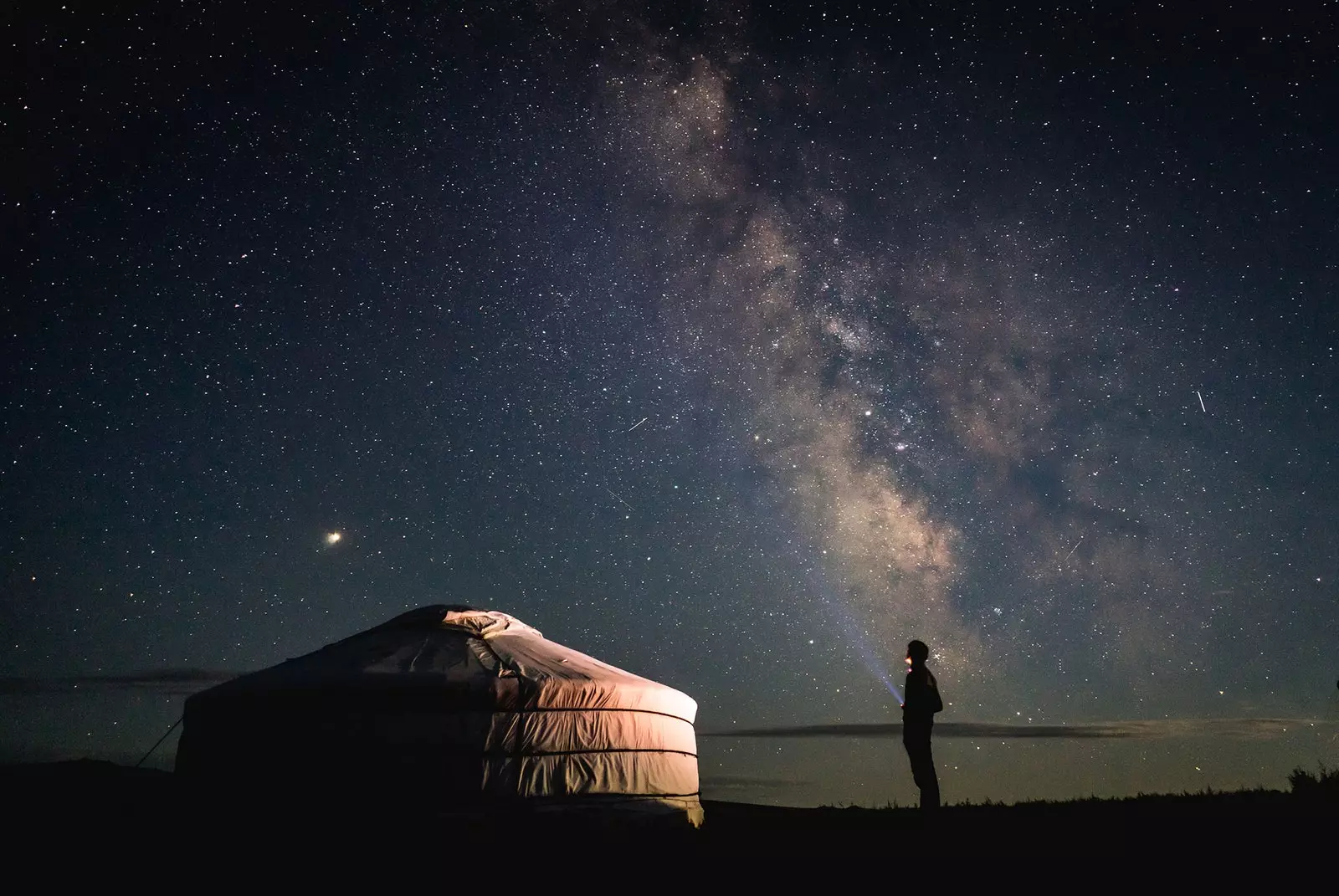
Live like a nomad in Mongolia
Mongolia is as big as Spain three times (it has 1,564,116 km2) and the entire country barely lives as many people as there are in Madrid city, about 3.2 million. Is he country with the lowest population density in the world. Of those three million, almost half live in the capital, Ulaanbaatar, and 37% live in the middle of nowhere.
For millennia, Mongolians live as nomads. Even in Ulaanbaatar, where skyscrapers rise inevitably and parallel to economic growth, yurts are part of the landscape.
It is not uncommon to see these spherical tents, with a wooden structure, lined with sheep's wool and white tarp covers on the rooftops of concrete buildings or in backyards. Nor in the humble plots that surround the city: although these Mongolians live in houses with four walls, if there is space, a yurt will not be missing. Being a nomad is inherent to being a Mongolian, regardless of circumstances or progress.
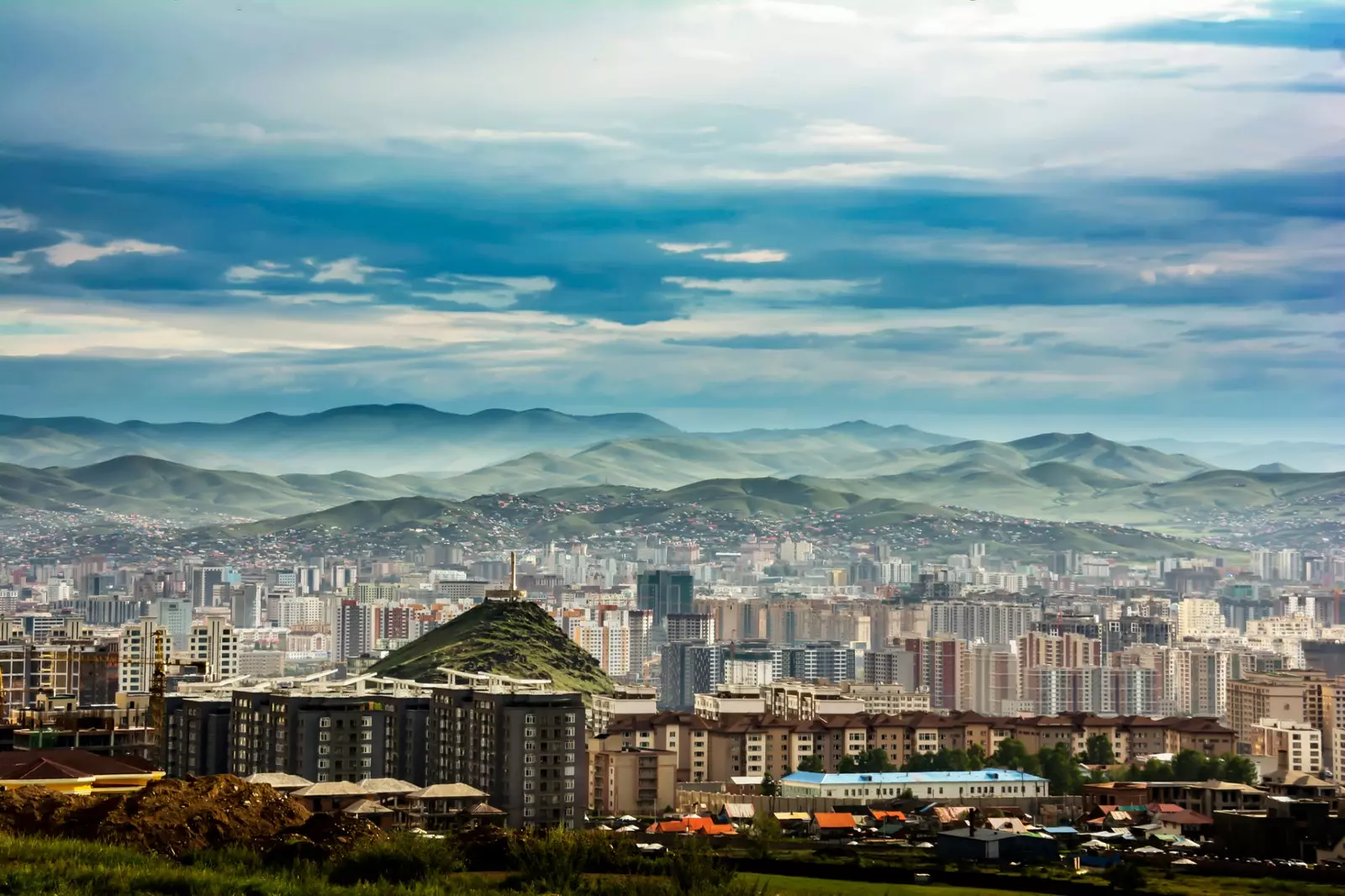
There are also yurts next to the skyscrapers of Ulaanbaatar.
AN INACCESSIBLE WORLD
The nomadic lifestyle permeates every part of the country, but if there is one place where the traveler can to experience it and immerse yourself in it, is the Orjon Valley. Declared a UNESCO World Heritage Site in 2006, it extends over 143,867 hectares, of which 7,537 are protected. Its few inhabitants live for more than 2,000 years as nomadic herders, oblivious to the passing of time.
Getting to the Orjon Valley is not easy. It is located 380 kilometers west of Ulaanbaatar. can be visited as a getaway from the capital or as a rest stop if you are coming from the south, after an exhausting journey from the Gobi desert. But no matter where you come from, the road ends in the village of Khujirt. From there, to the west, only a well prepared 4x4 can enter the valley.
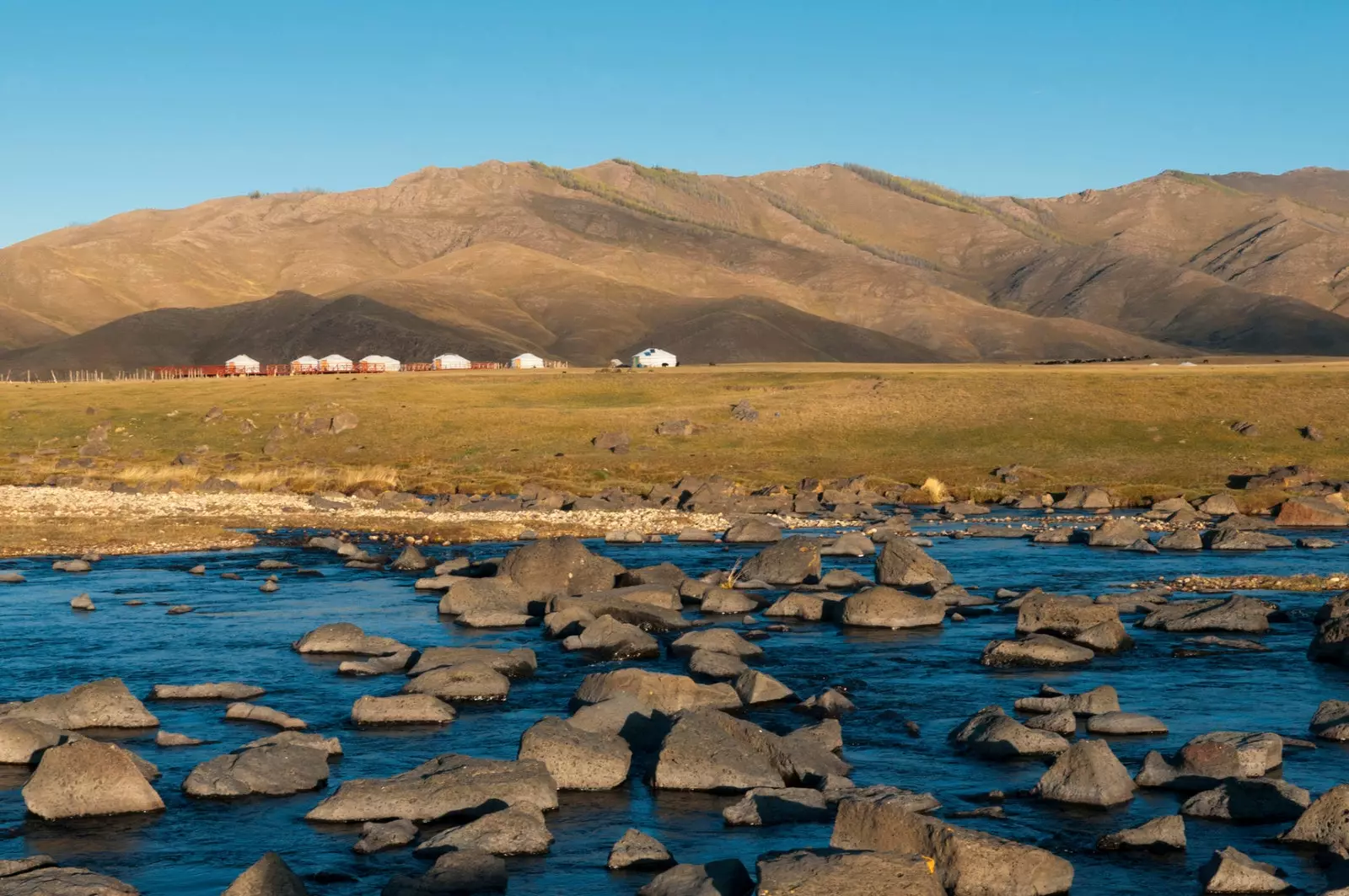
It is not easy to get to the Orjon river valley.
The route to the bottom of the valley simply does not exist: you have to cross at least six streams and constantly guessing, by the marks of the wheels on the ground, which is the best way. Some can lead you to a dead end, to sheer rocks that will puncture your tires or to mud holes that even the most robust 4x4 will not be able to get out of.
The easiest way to get there is accompanied by an experienced local driver. Driving on your own with a rental SUV, however, can be one of the most exciting experiences of your life.
Once inside the valley, the profile of the great river Orjon is followed at times, passing through remote villages of yurts and herds of yaks, goats, sheep and horses, until reaching the spectacular orkhon khukhri waterfall (literally, Orjón waterfall) or Red Waterfall in English.
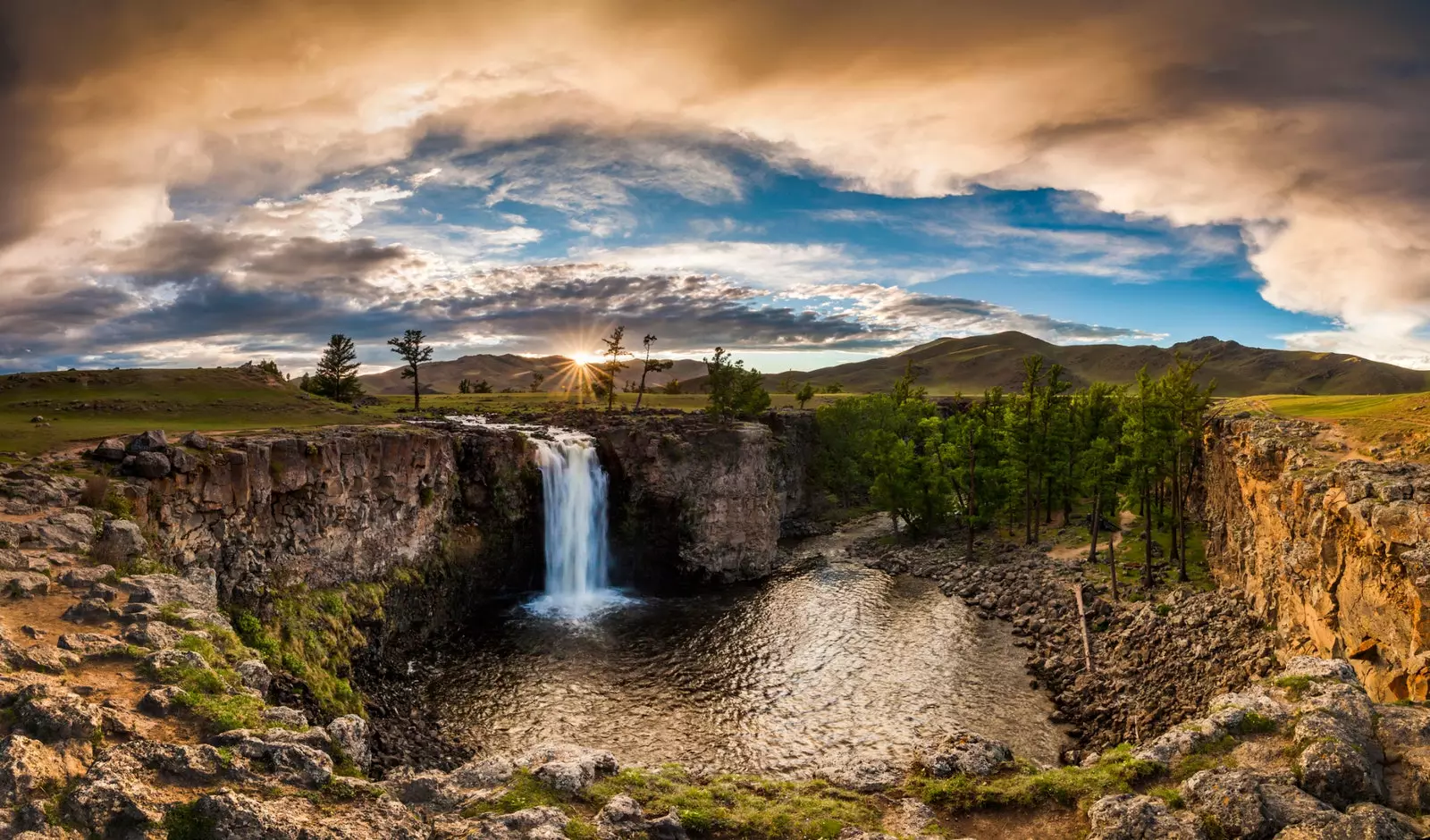
The Orjon River waterfall looks like a movie set.
The Orjón waterfall is the most touristic place in the valley. Tourist, because perhaps you can come across a score of visitors between locals and foreigners on a busy day in August. That is what is meant by tourist saturation in Mongolia. In the rest of the valley it is easy to find any place to camp in the bend of some tributary of the Orjon where not a soul is seen tens of kilometers away round
Its green meadows, trees, rivers, waterfalls and fresh air make it a place where you have to spend at least a couple of nights, in your own tent or living with the local nomads.
Near the waterfall there are several yurt villages where they live ranching families with whom it is possible to stay. Unlike other destinations where the nomadic family is an artificial element of the tourist pack, In the Orkhon Valley, the nomads and their way of life are real.
You can go with an agency that has organized your trip from Ulaanbaatar or simply talk to any family that will warmly welcome you in their yurt and in his life for about ten euros for three people a night.
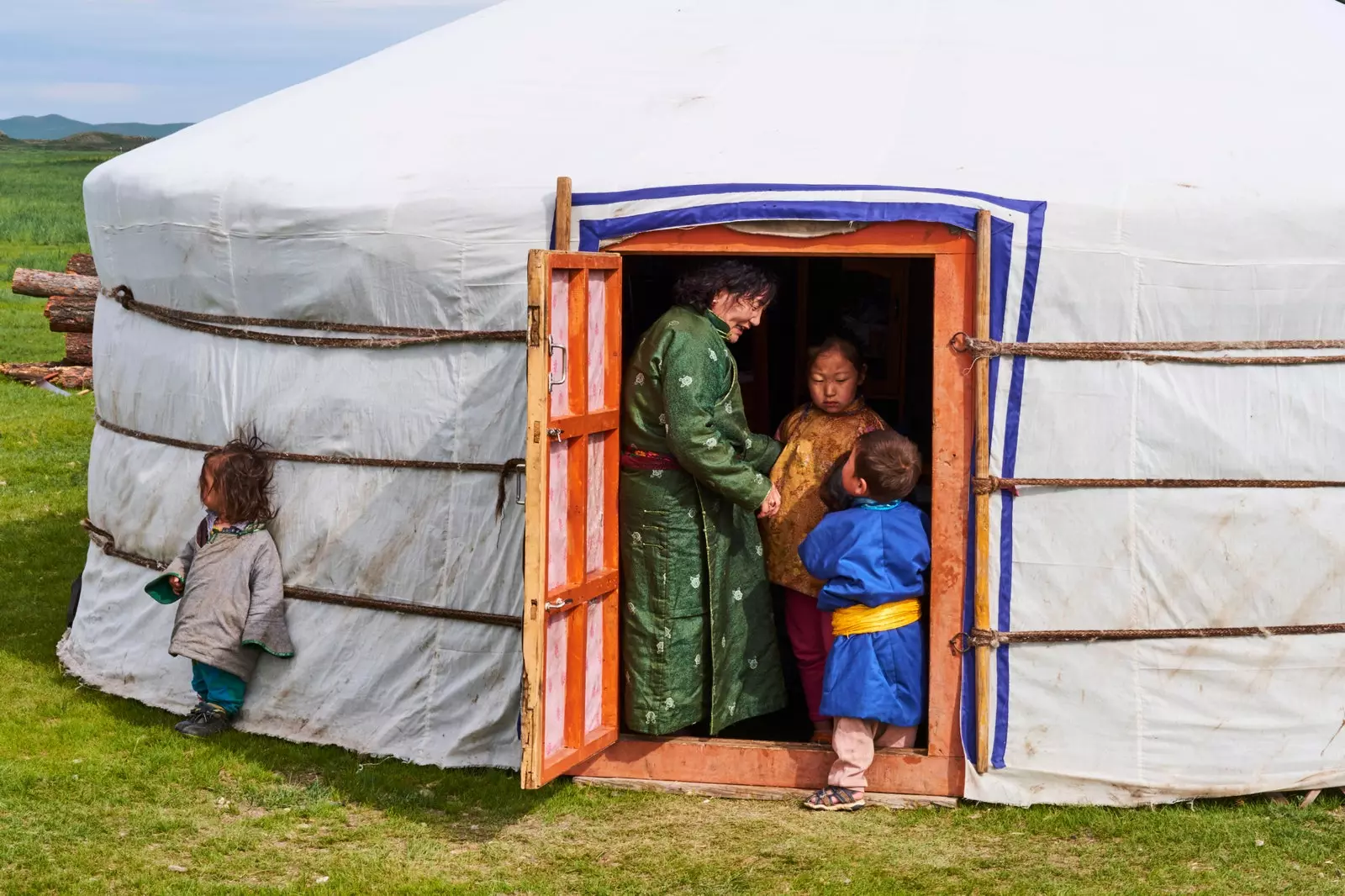
Mongolian nomads will be happy to invite you to spend the night in their yurt.
LIFE IN A YURT
Living conditions in a yurt are not easy. The cold at night can be terrifying. Normally, these tents are usually equipped with a metal chimney inside, but when the firewood runs out there is no other choice but to go out for more in the middle of the icy steppe or put up with blankets on beds that, more than mattresses, are made up of by rugs on top of each other.
The nomads live like this all year round. Their only source of electricity is usually a small solar panel that they use to watch television and charge mobile phones. Running water is from nearby streams, It is used both for bathing and showering and for washing utensils.
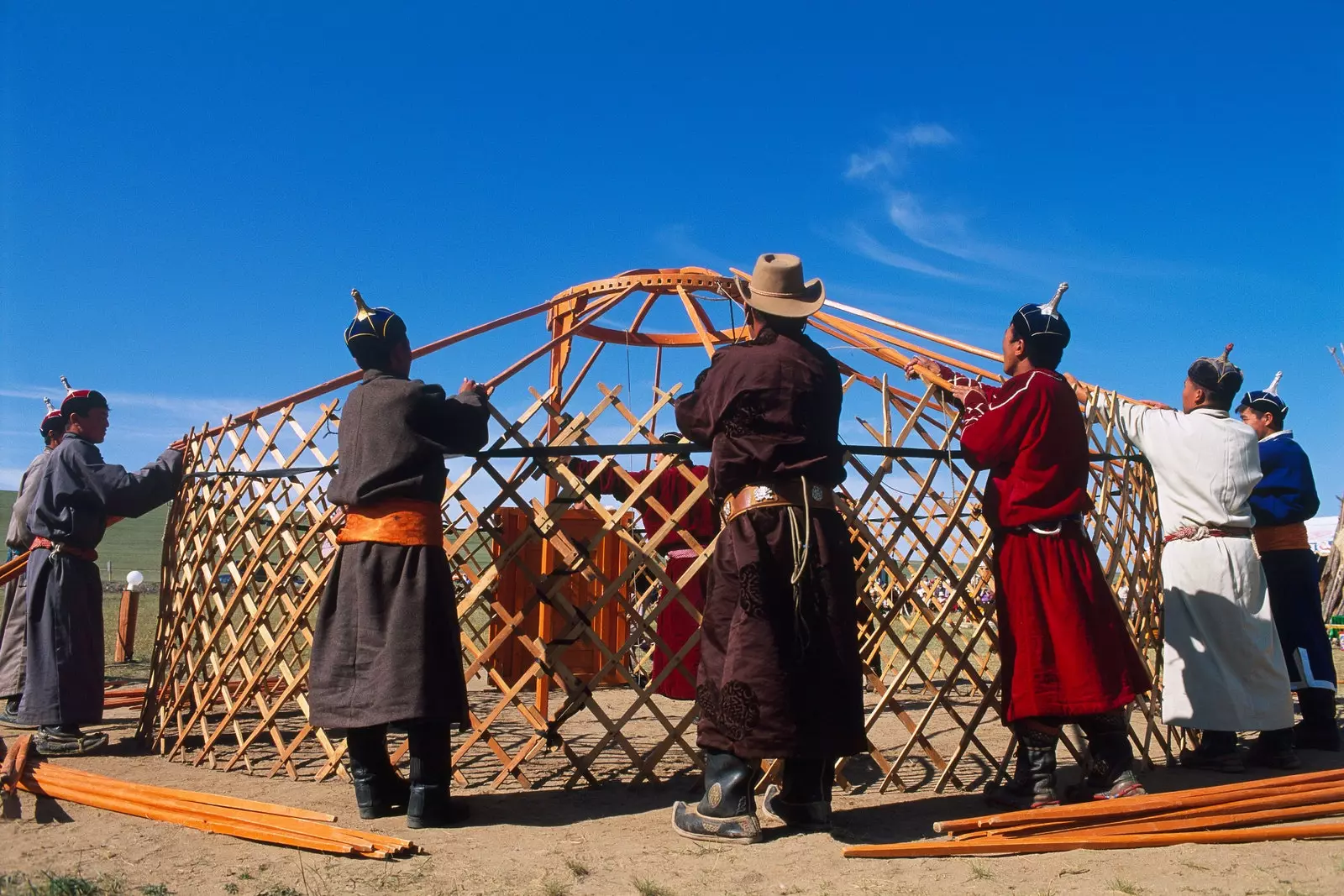
Mongolian nomads building a yurt.
In a single yurt contains all the rooms that a conventional flat would have: kitchen, bedroom and living room, except for the bathroom: you relieve yourself in the immensity of the countryside or in wooden and canvas toilets that will protect you from prying eyes.
Living with a nomadic family also implies accepting their customs and eating what they eat. The fermented horse milk or yak cheese are typical nomadic products but few stomachs can digest them. Tasting them is enough, but you can't turn them down as it would be an affront to their hospitality. The way of communicating with them is the universal language of signs, the drawings on the ground and even the noises to designate animals or elements of nature.
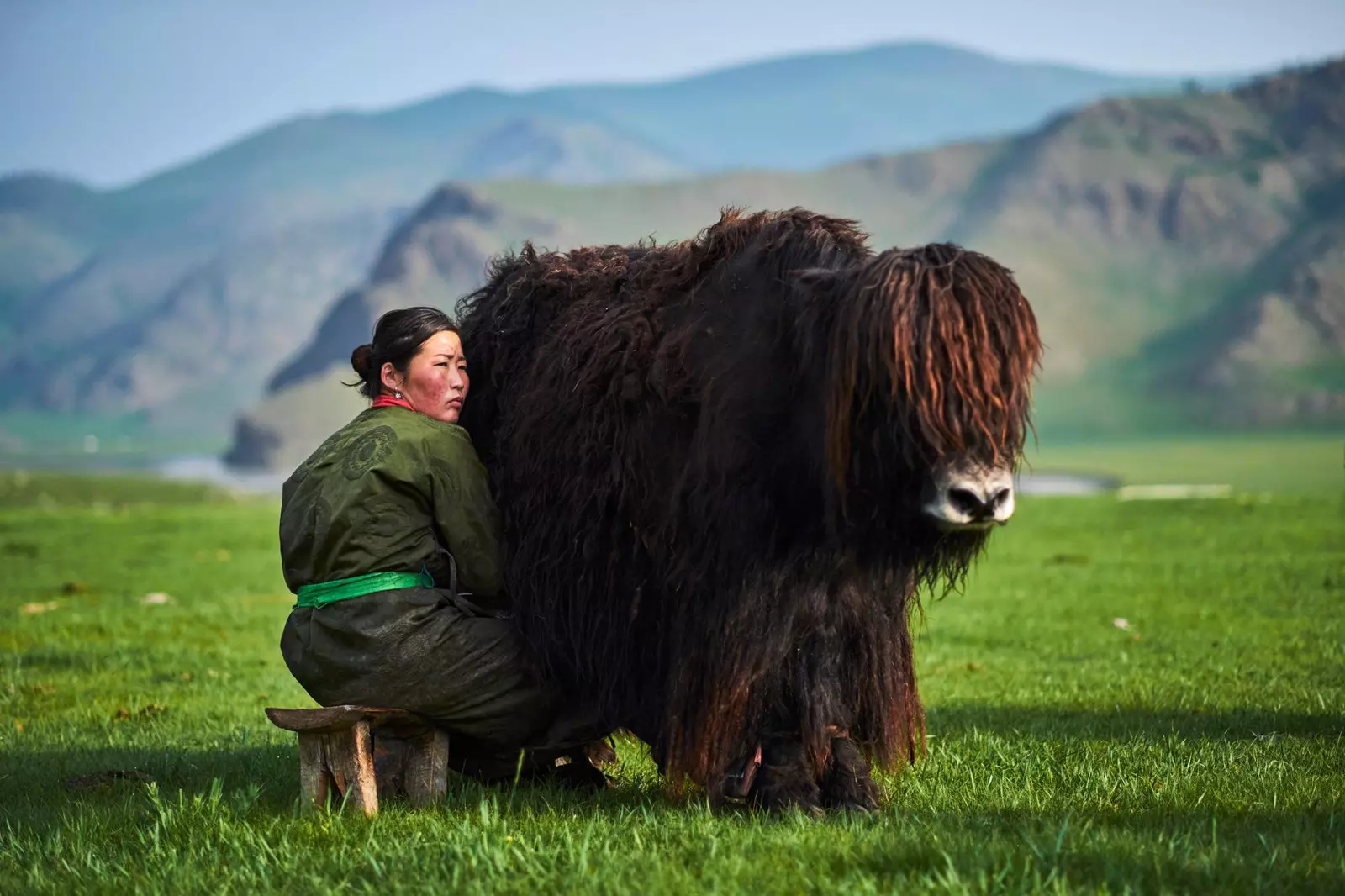
Nomad woman milking a yak in the Orkhon Valley (Ovorkhangai).
If all this is too much for you, you can always stay in one of the several yurt resorts close to the Orjon waterfall. There you will not lack any comfort, but you will miss the most authentic part of what it is like to live as the Mongolians have done for thousands of years.
Living with the nomads is a great learning of how to do it with very little but, above all, it is an opportunity to observe how the environment develops abilities that in the first world seem buried completely: boys and girls ten years of age and younger know how to chop wood, light bonfires and lead herds of galloping horses, as well as navigate non-existent roads without maps.

Cheese curing on the roof of a yurt.
GALLOP WITHOUT LIMITS
In addition to the day-to-day coexistence of families, the star activity is horseback riding. The Mongolians are a traditionally equestrian people and almost all families have horses of their own, with which you can go for a ride, from an hour to several days, for prices you would never imagine.
Forget any previous experience you've had riding a horse, because in Mongolia and specifically in in the Orjón valley, you will have miles and miles of green plain to ride at your whim, taking the precautions you consider necessary: no one will force you to go slowly or wear a helmet... Of course, always at your own risk.
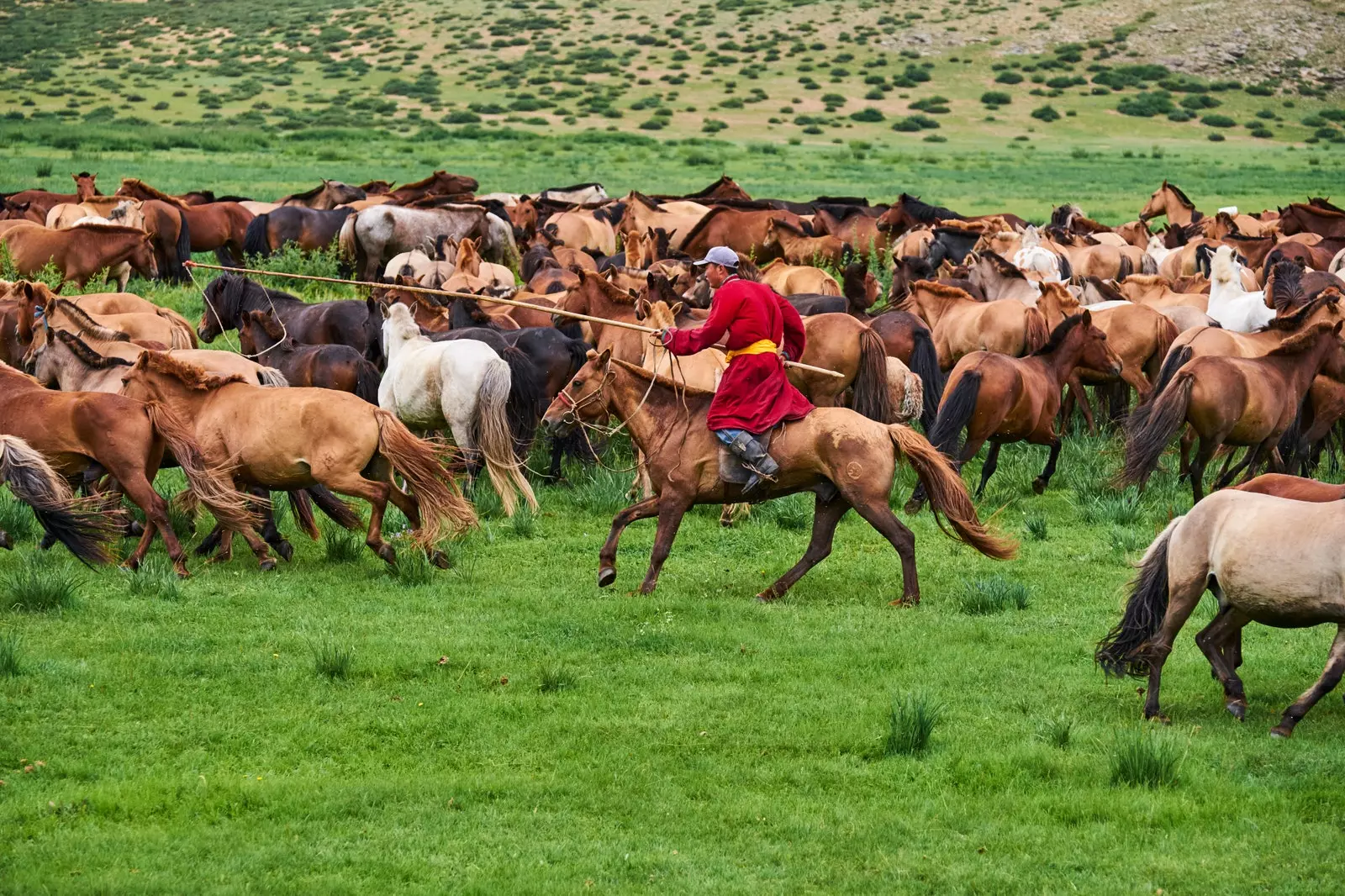
Horse riding is the main activity of the Mongolian nomads.
From the Orjón waterfall you can make a multi-day horseback excursion to the Eight Lakes, an alpine landscape inaccessible in 4x4 where the human presence is even less. The nomads themselves take care of the horses and all the food and camping equipment. Don't think, of course, about mobile, here and in much of the valley.
The natural environment of the Orjón Valley is a place destined to stay that way for a long time to come. The force of nature is so powerful that human impact can never shape it. The Mongols who inhabited this valley with their herds 2,000 years ago know it well: they have not changed – nor can they, nor do they want to – their way of life since they arrived.
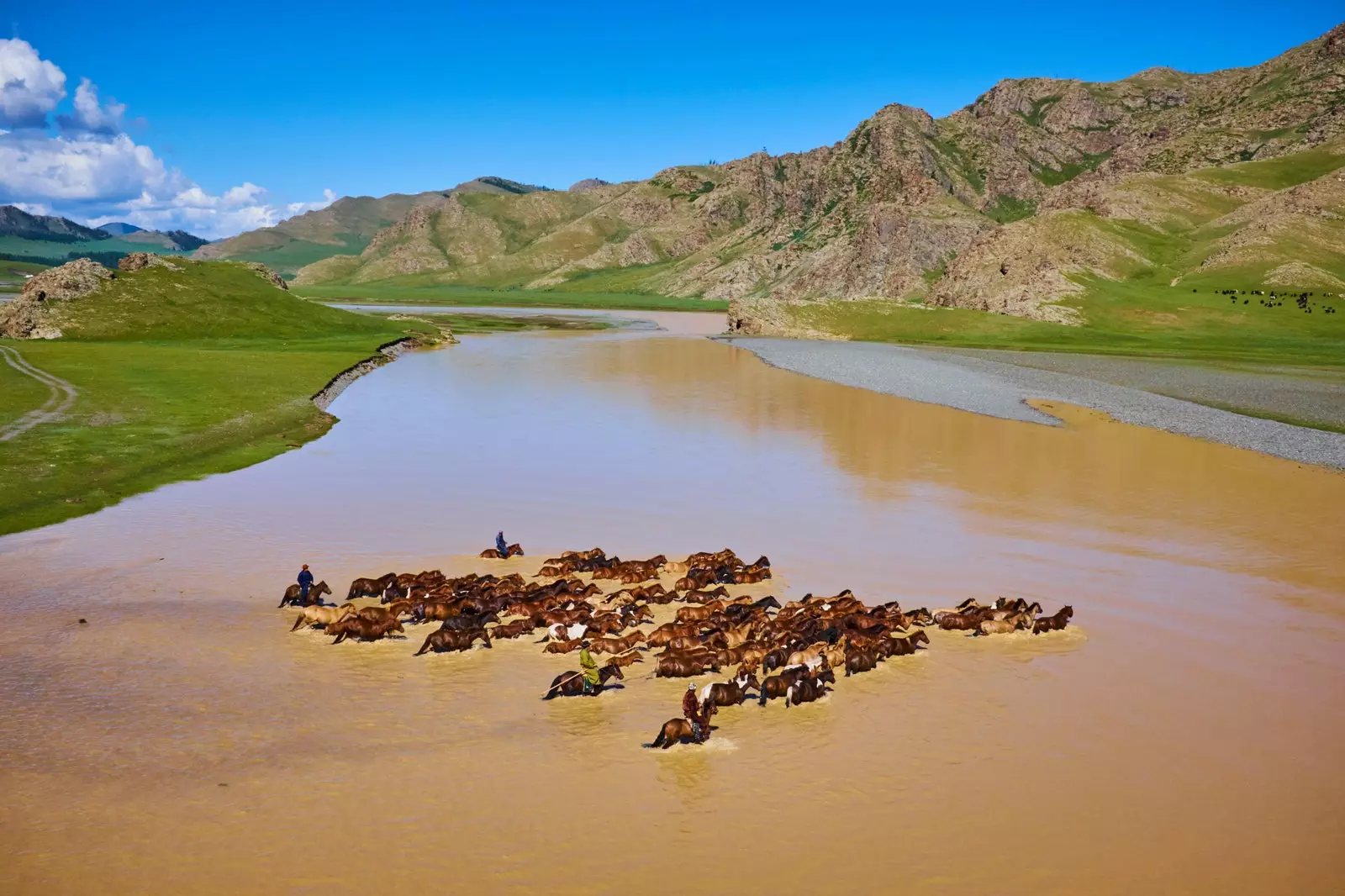
Mongolian horseman crossing the Orkhon River with his herd of horses.
